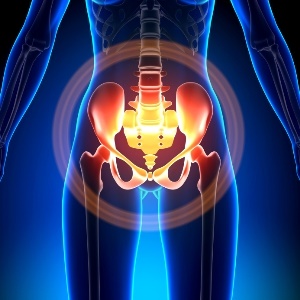
Summary
- Pelvic organ prolapse is a common condition in women.
- It results in discomfort and dysfunction.
- It can be treated.
What is pelvic organ prolapse?
Pelvic organ prolapse in women is common. The more births a woman has, the older she gets, the less resilient is the support system within her pelvic floor. The vagina, uterus, bladder and rectum are held in place by attachment to the pelvic side wall. This attachment is made up fascia (thickened tissue) and muscles. Any disruption of this support system results in a weakness and descent (prolapse) of the organs within her pelvis. This may be a prolapse (herniation) of the bladder into the vagina, the rectum into the vagina or the uterus descending down into the vagina towards the entrance of the vagina.
Other factors which exacerbate prolapse are genetics, race, smoking, obesity, chronic constipation and other lifestyle factors which result in increased pressure on the pelvic floor.
After the menopause, the normal support tissues lose the oestrogen support and hence thinning of the tissues occurs and exacerbations of the weakening become apparent. In parallel with organ prolapse, urinary incontinence often occurs.
Pregnancy itself results in damage not only to the support structures but also to the nerve supply of the area. Dependent on the type of birth, the amount of trauma which occurs during the birthing process, so will the damage that results manifest with prolapse later. The birthing trauma can also be neurological to the nerve supply of this area.
How is it diagnosed?
Patients will present either with incontinence or with symptoms of pressure within the vagina, i.e. a feeling of a bulge in the vagina or problems emptying the bladders or the bowels. There may also be a visible mass seen at the entrance to the vagina. The medical attendant (the urogynaecologist or pelvic floor specialist) who sees the patient will need to make an assessment to rule out factors which exacerbate the prolapse, to assess co-morbidities and to decide what is the appropriate management.
How is it treated?
Conservative management
If the management is conservative, this would include physiotherapy ( with a specialised pelvic floor physiotherapist), insertion of vaginal cones, appropriate sanitary ware or the insertion of a ring pessary to give support to the prolapsing areas of the vagina.
Surgical options
Surgical options would depend on which aspect of the prolapse is occurring. This could result in surgery to the appropriate affected area. These areas of prolapse are akin to a hernia by the anterior vaginal wall (bladder) or posterior vaginal wall (rectum) or centrally by the upper vagina ( uterus or top of the vagina). The hernial sac needs to be opened. If the anterior vaginal wall (cystocoele) needs to be repaired, this can be done with the patient’s own tissues or there could be an artificial mesh support system inserted.
The same applies to the posterior compartment (rectocoele), i.e. the rectum could be bulging into the vagina. Again the sac needs to be opened, the defect identified and this repaired either using the patient’s own tissues or artificial mesh support systems. If the uterus is prolapsed, this may necessitate a hysterectomy but this is not always necessary and surgery to support the uterus could be performed either through the vagina or through an abdominal procedure.
Since the advent of the new support systems, the recurrence rate after surgery is extremely low. Previously with repairs the recurrence rate was approximately 40% over 5 – 10 years. Today this is approximately 5 – 8%.
Often there is a multicompartment defect and often different areas of the prolapse need to be fixed at the time of the primary surgery.
Running in parallel often is ano-rectal dysfunction. This needs to be assessed and managed appropriately at the time of the surgery.
Written by Dr Alan Alperstein, gynaecologist.




 Publications
Publications
 Partners
Partners










